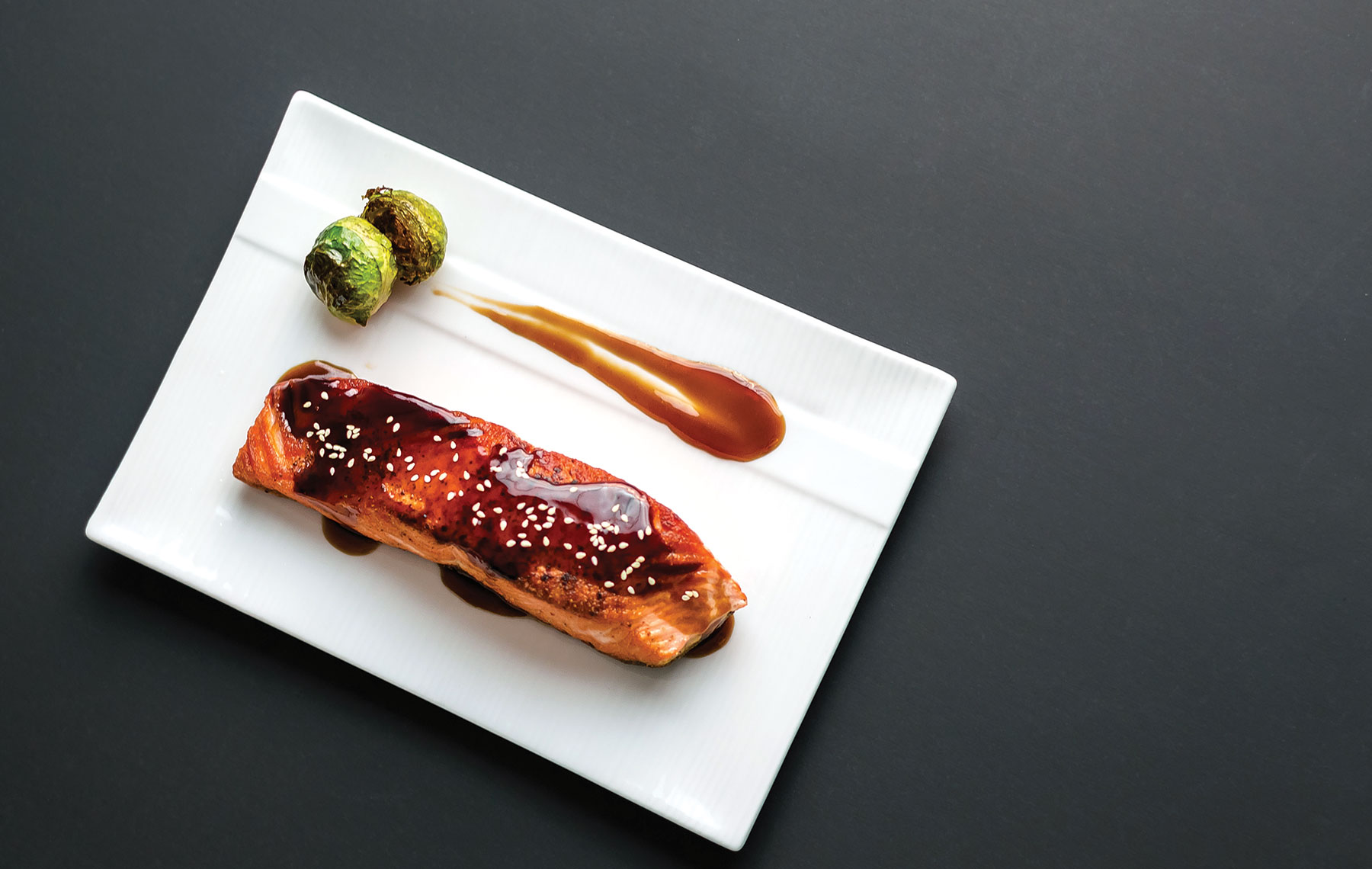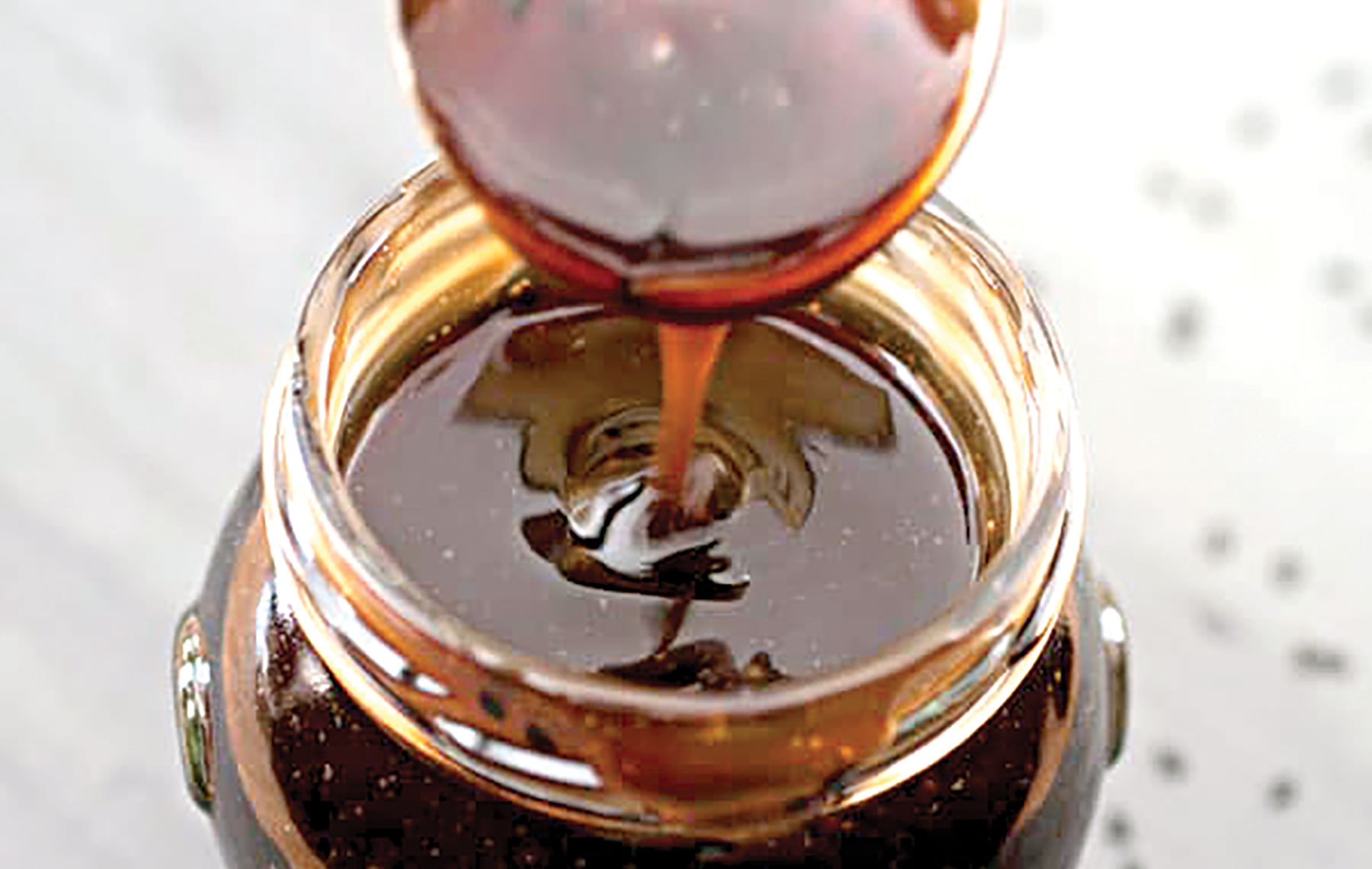
Like almost every Jew I know, I seem to have a microchip installed somewhere in my body that is programmed to a default factory setting that considers fatty fish, beef, chicken or tofu covered with a heavy shellac of salt and sugar and served over rice or noodles to be, for lack of a better term, the bomb.
Just the word “teriyaki,” for example, conjures up fond memories of Chun King mini egg rolls that are still sold in the frozen food section (but rarely seen at parties anymore) and the packets of sweet chili sauce or Chinese mustard “included” in the box. If you grew up a Jewish kid in the suburbs, eating in restaurants close to your cul-de-sac that served pupu platters with flaming blue gel in the center and Mai Tais (with orange slices, maraschino cherries and paper umbrellas), or if your Christmas tradition involves Chinese food and a movie, this is your soul food!
Teriyaki is a simple Japanese technique for meat that’s been around since the 17th century and produces a gorgeous piece of protein. In Japanese, “teri” means “to glaze” and “yaki” translates to “grill”; but in America, teriyaki is a flavor profile borne out of decades of immigrants adapting to cheap and plentiful local ingredients. Although the Japanese developed the concept of umami (the savory fifth taste), Asian cooks tend to let the freshness of the ingredients shine through and use sugar, salt, soy sauce and spices to their advantage, not to overpower a food. But American teriyaki is defined by excess — overly sweet, overly salty, boldly flavored. It’s an overt and direct attack on the taste buds, and we’ve come to really like it that way.
Modern Japanese, Chinese, Vietnamese and Korean food in the U.S. has come a long way from the days when fried rice and orange-colored sweet-and-sour pineapple chicken were the go-to orders for restaurant patrons. But there is something remarkable and nostalgic about a flavor profile like teriyaki, and it has little to do with its origins. Certain foods have infiltrated Americana through chain restaurants and fast-food establishments to become part of our national taste memory. Like lasagna and tacos, these American staples bear just enough resemblance to their origins to make them recognizable; but they are, first and foremost, a perfect example of an adaptation of immigrants to their environment. Teriyaki, for example, was brought to Hawaii by Japanese sugar cane workers in the mid-1800s, but ingredients for the simple-to-prepare sauce — soy sauce and mirin (a sweet rice wine) — were quickly modified to save money. Soon, the sweet mirin was replaced entirely by cane sugar (which makes sense on a sugar plantation), and by the 1920s ginger, garlic and green onion were added — most likely an influence brought by the influx of Chinese immigrants to Hawaii.
Teriyaki really got interesting after World War II. American GI’s serving overseas became obsessed with all things Polynesian.
But teriyaki really got interesting after World War II. American GI’s serving overseas became obsessed with all things Polynesian. By the 1960s, cheap wheat to make soy sauce and mega sugar cane production created a perfect storm in which the flavors of the East slowly infiltrated restaurant menus, home décor and party food. Egg rolls, rumaki and crab rangoon became all the rage, but teriyaki sauce was the gateway drug — salty, sweet, sticky, simple to prepare and not too exotic as to intimidate. We knew these flavors and they became part of us.
Today, most American households have a bottle of teriyaki sauce in the fridge, and what’s more incredible is that teriyaki has completely changed from a description of a Japanese cooking technique to a pourable sauce, marinade and food category. Kikkoman’s original teriyaki sauce is the best-seller on the market today and is considered “best in its class,” boasting the sugary, pineapple flavors of Hawaii and the salty authenticity of a Japanese brand. But it shouldn’t surprise you to know that Soy Vay’s Veri Veri Teriyaki, the brainchild of a Jewish and Chinese-American couple, comes in a solid second. Soy Vay adds more Chinese ingredients to the sauce: ginger, garlic, onion, sesame seeds and sesame oil. Soy Vay managed to produce an entirely new (and kosher) teriyaki by building on the suburban Jews’ Chinese restaurant flavor profile in an authenticity-obsessed foodie landscape. And Soy Vay did this unashamedly by moving further away from the original Japanese soy sauce and mirin formula, and without being “authentic” about it in any way.
The result — one of the many ironies of modern-day cooking — is that now when I make teriyaki chicken, salmon or meatballs in my café, I have to adapt the original technique and recipe to the American palate, which unexpectedly merged to form a whole other thing. We’ve distilled the abundance of flavors, methods and ingredients from centuries of other cultures into some of our own, and what we’ve come up with is magically delicious and quintessentially American.

Here is my version of Soy Vay, just in case you don’t like soy as the first ingredient in your food and sugar as the second. But don’t worry. It still tastes like what you remember from your teenage years — that favorite strip-mall Chinese restaurant with tiki torches lighting up the corners.
YAMIT’S “AMERICAN” TERIYAKI GLAZE
2 parts tamari (tamari is gluten-free, but low-sodium soy sauce is fine)
2 parts sake (Japanese rice wine)
2 parts mirin (Japanese cooking win similar to sake but with a higher sugar content)
1 part rice vinegar or white vinegar
1 part white or brown sugar or sugar substitute (I use an erythritol-based sugar substitute called Sukrin)
1 part juice of freshly grated ginger (grate and then squeeze out the juice)
1 part juice of freshly grated garlic (optional but I use it)
1/4 teaspoon toasted sesame oil (optional)
1/4 teaspoon white pepper (optional)
Ingredients are listed as a ratio so cooks can scale up or down accordingly. It keeps in the fridge in a clean glass jar for at least a month. Use in the last moments of cooking to glaze fish, poultry, steaks, tofu or vegetables. You can also use it as a dipping sauce or add it to hamburger meat to create a fantastic teriyaki burger.
Note: Don’t marinate food in teriyaki; it pulls the juices out of the meat and you don’t want to start caramelizing the sugar in the sauce until you have crisped up its exterior.
Combine all ingredients (except for sesame oil) in a saucepan and cook over medium heat until a drizzle of sauce is thin enough to run down a plate but thick enough to stick.
The sauce thickens upon cooling. After it thickens, whisk in a drop or two of sesame oil and store the glaze in a jar until you want to use it.
You can use any unit of measurement, from tablespoons to cups. The only exception is sesame oil. Sesame oil needs to be subtle or it overpowers. Its taste should barely be discernible here. I never use more than a teaspoon even for a big quantity of sauce.
Trust me, make extra.
Yamit Behar Wood, an Israeli-American food and travel writer, is the executive chef at the U.S. Embassy in Kampala, Uganda, and founder of the New York Kitchen Catering Co.























 More news and opinions than at a Shabbat dinner, right in your inbox.
More news and opinions than at a Shabbat dinner, right in your inbox.